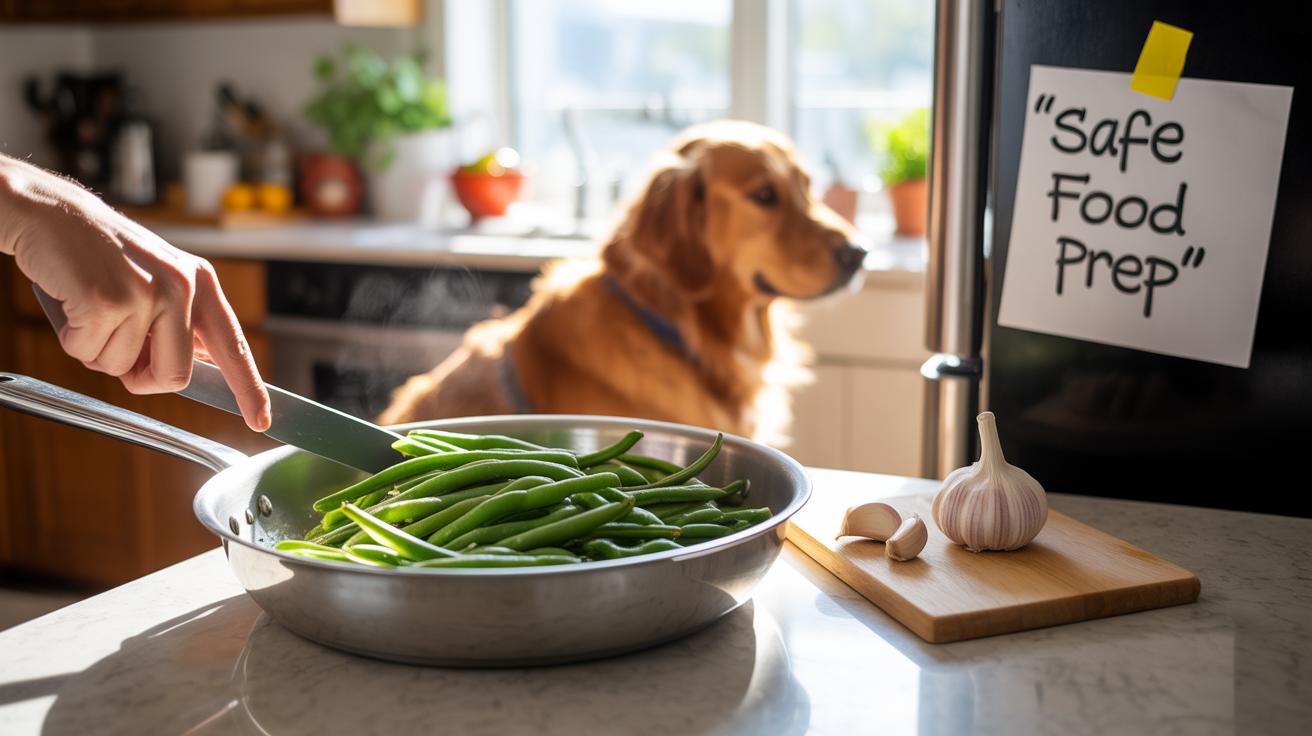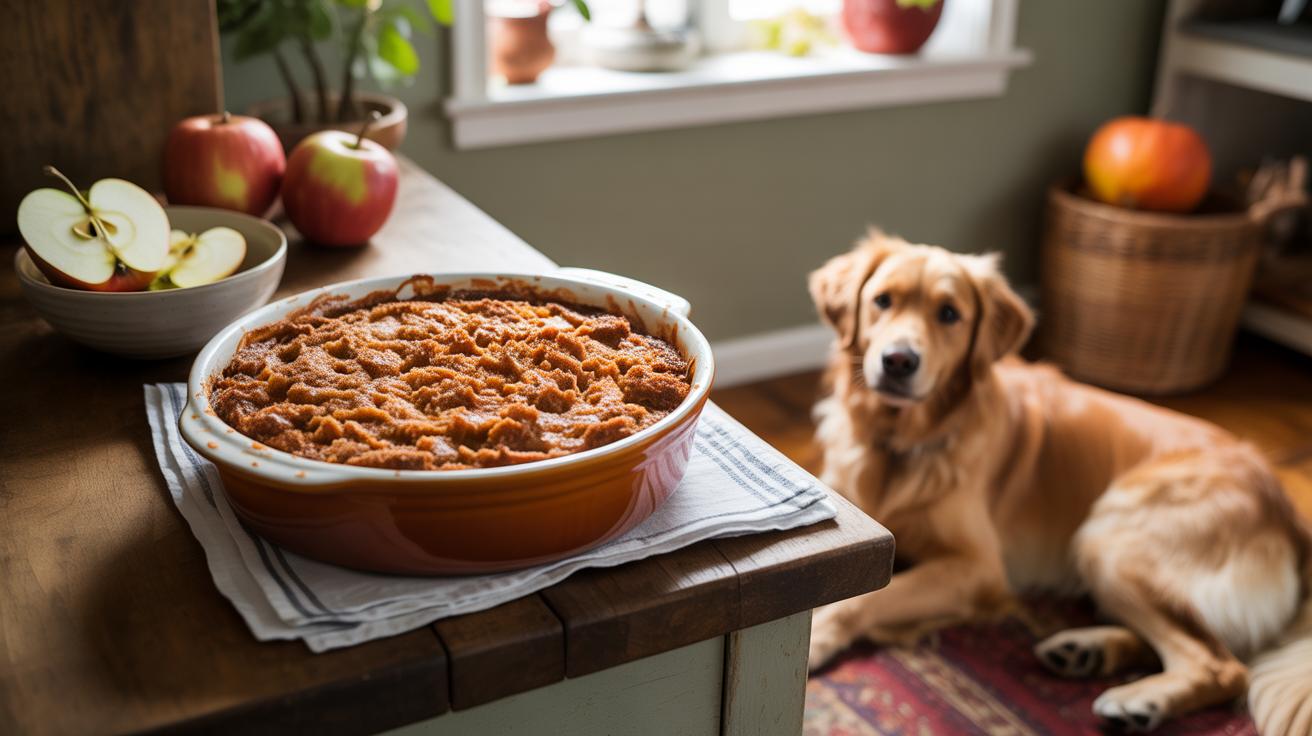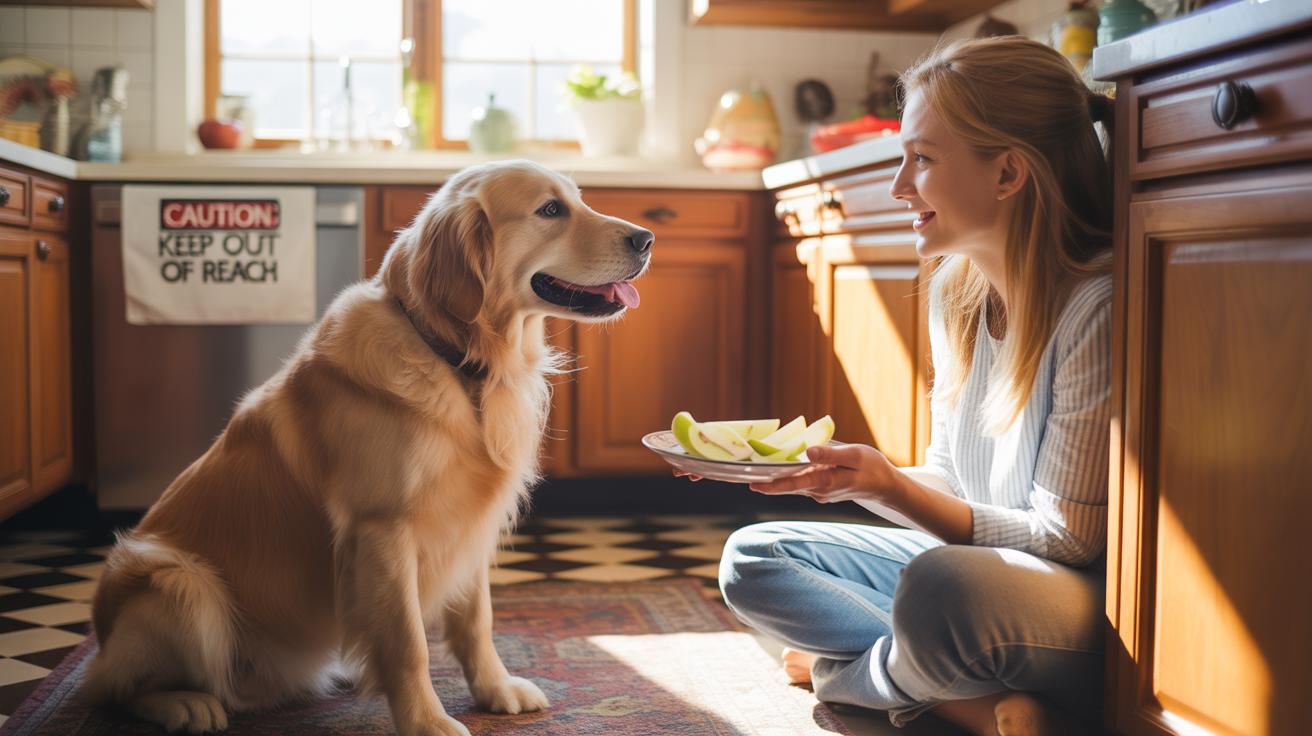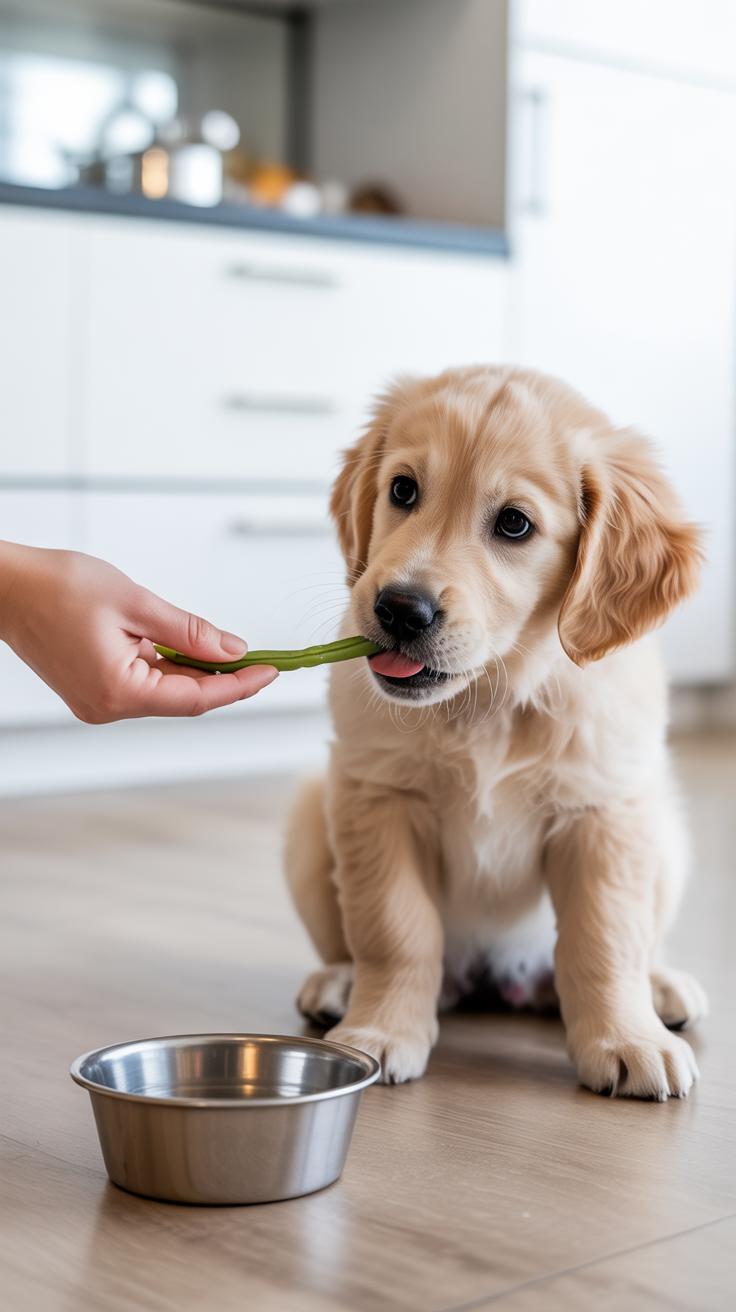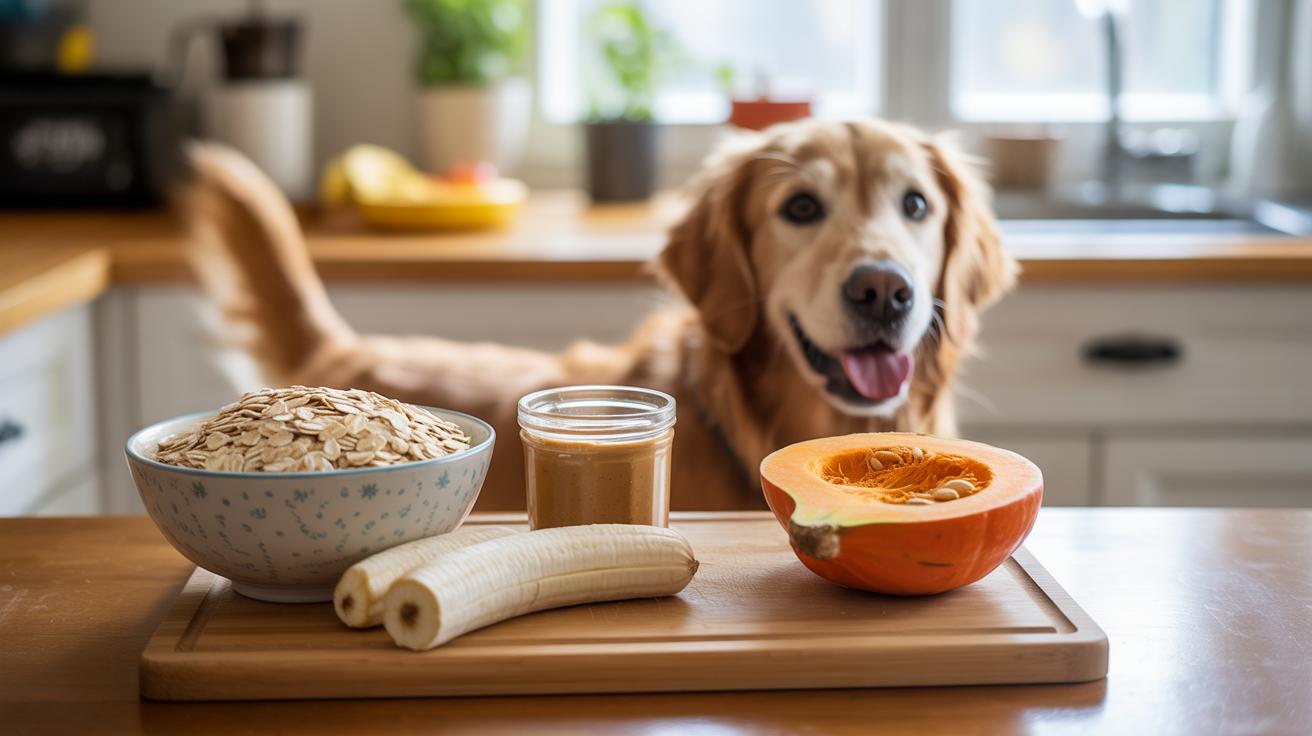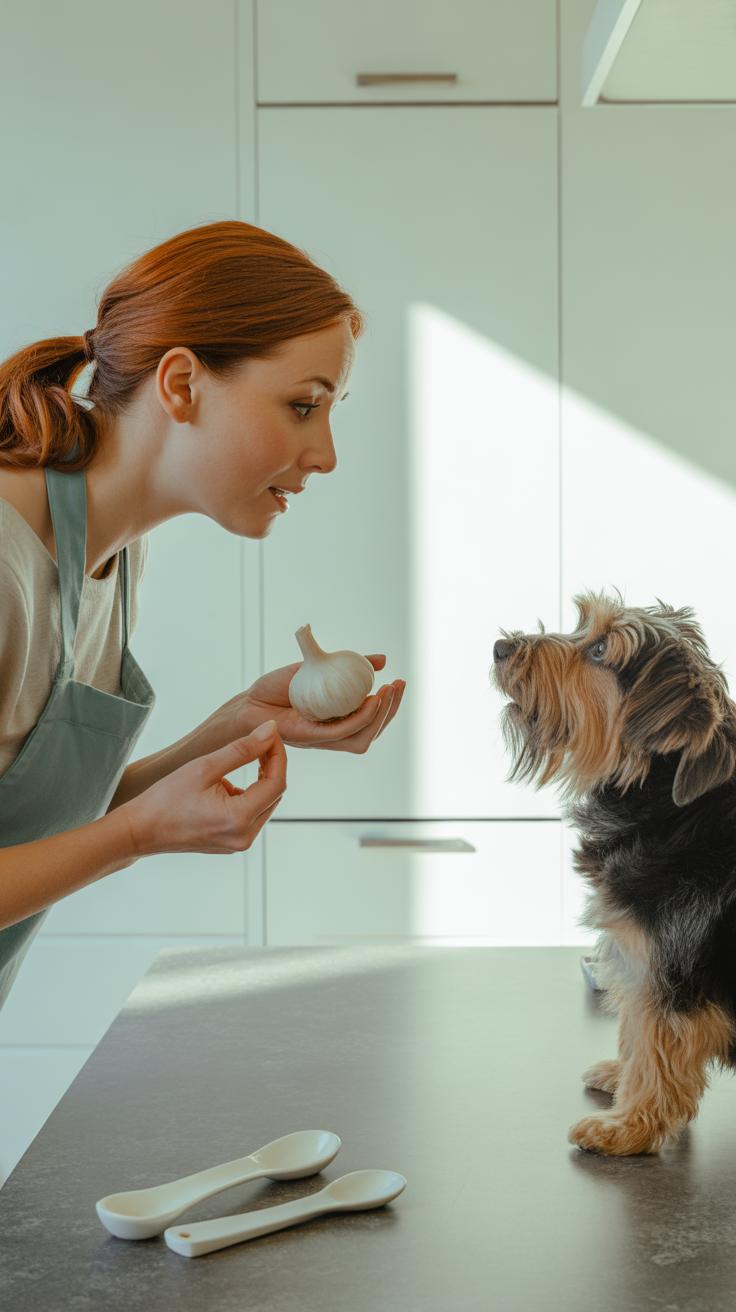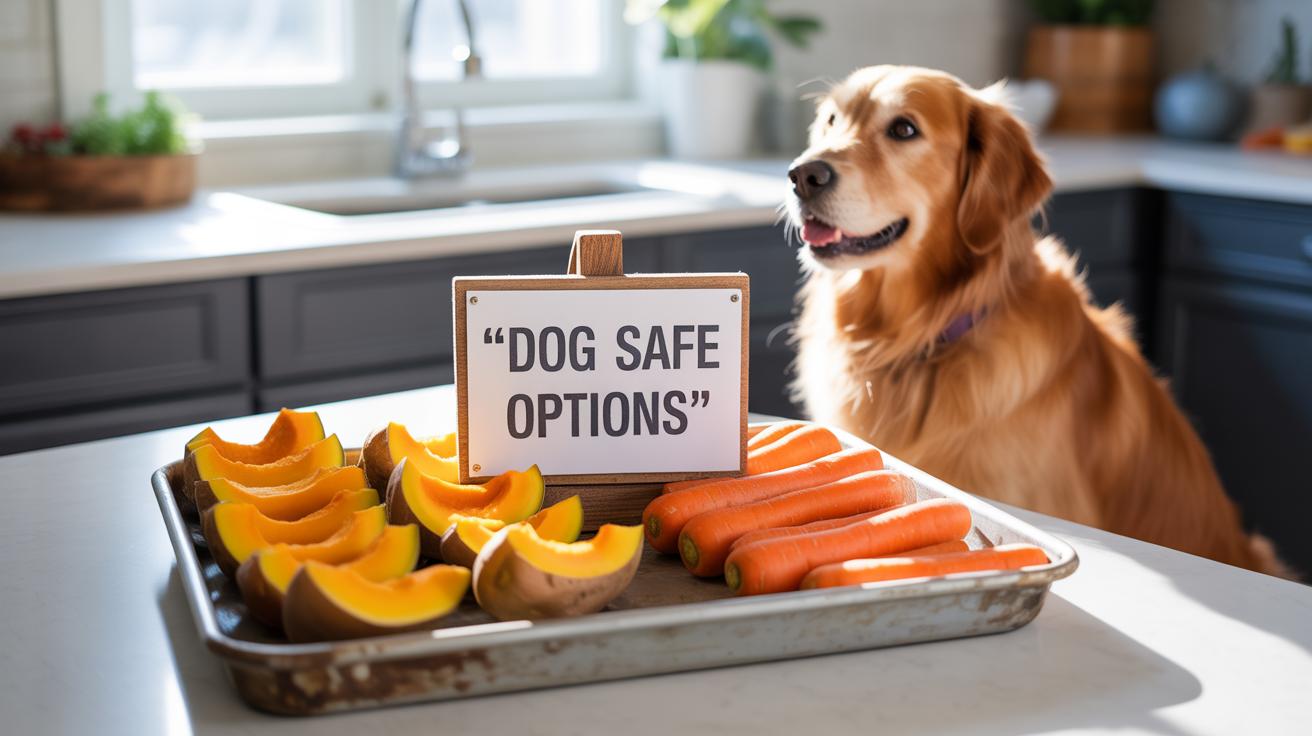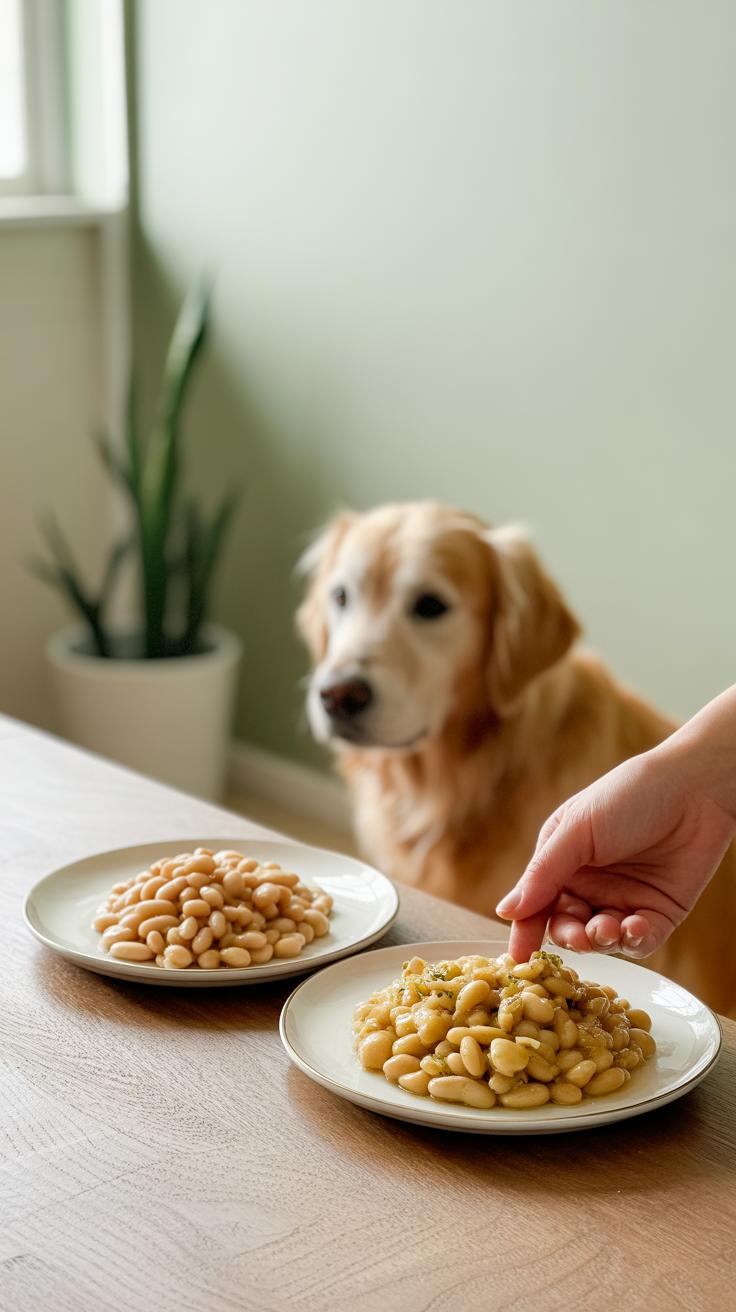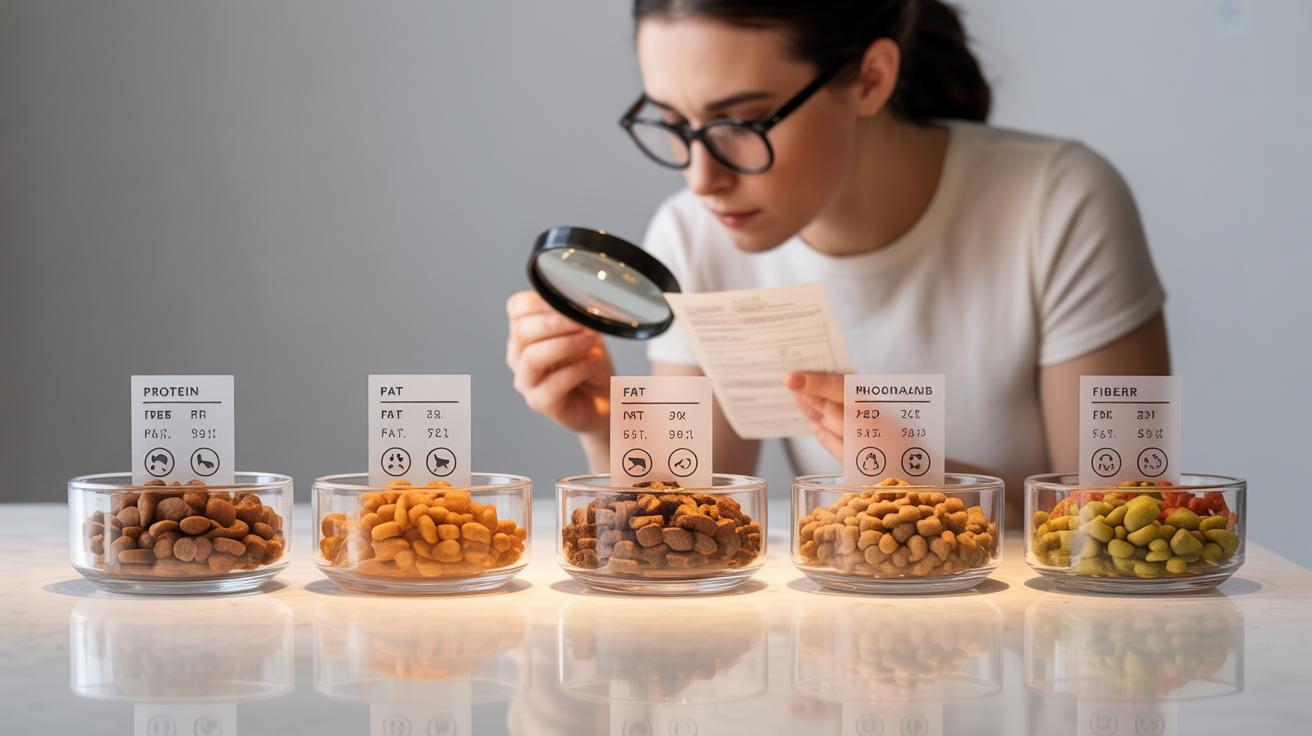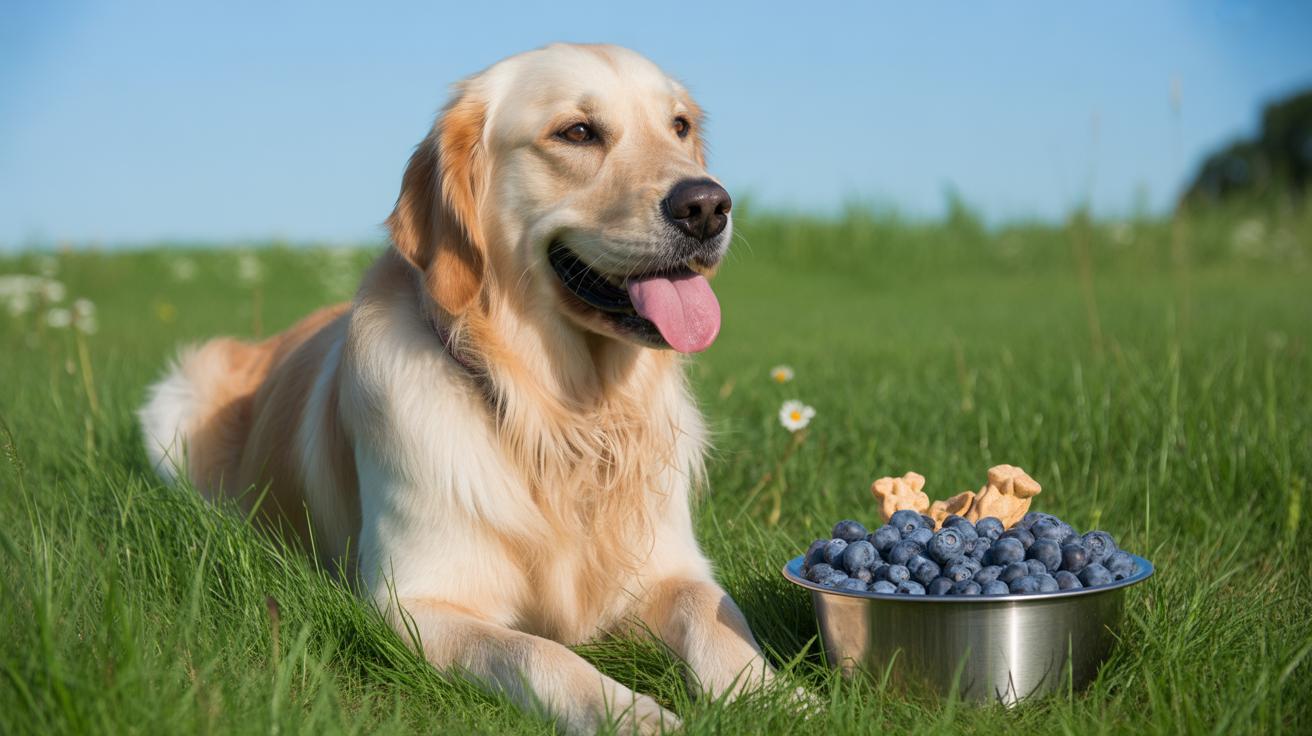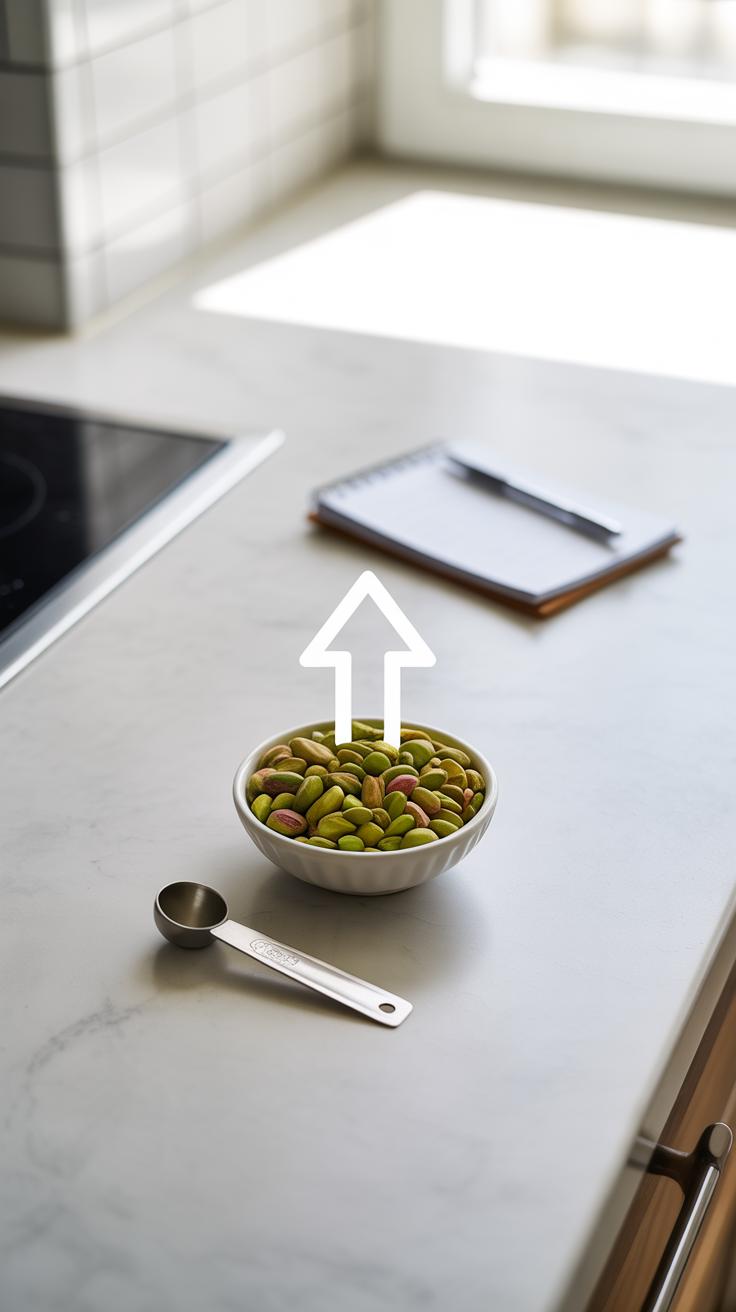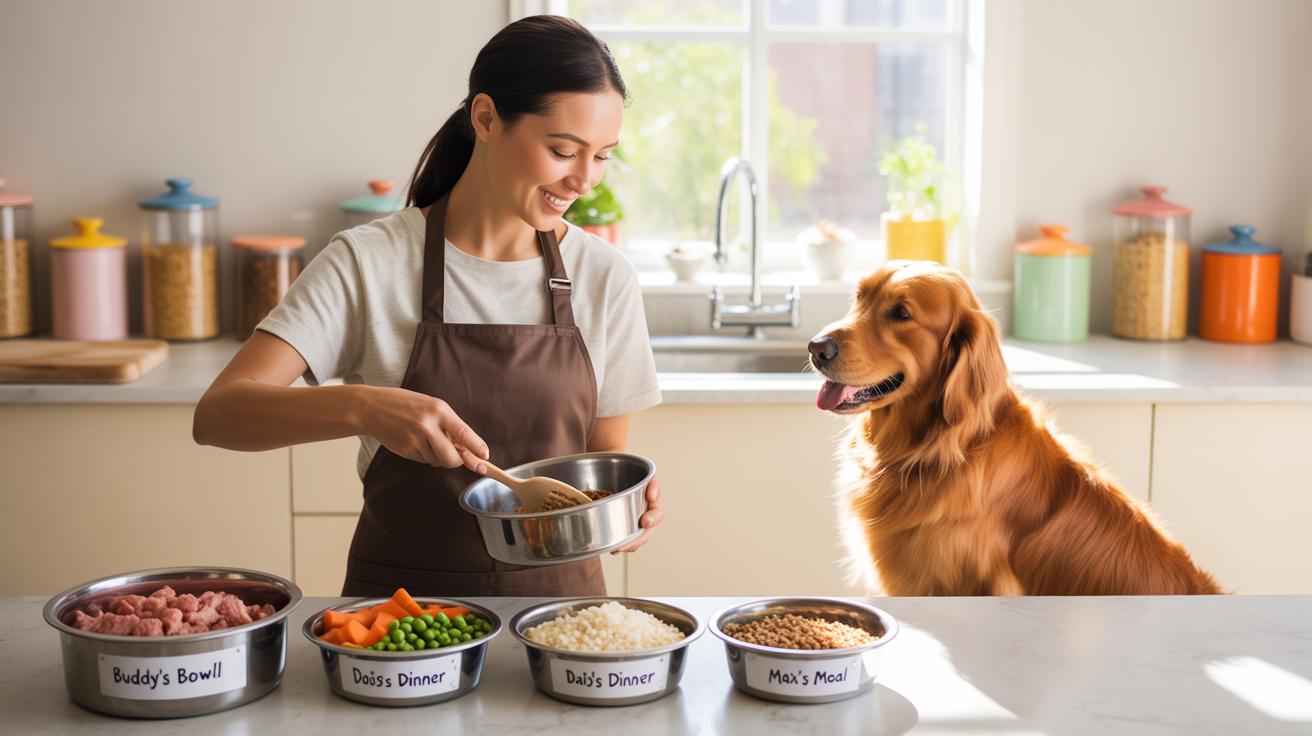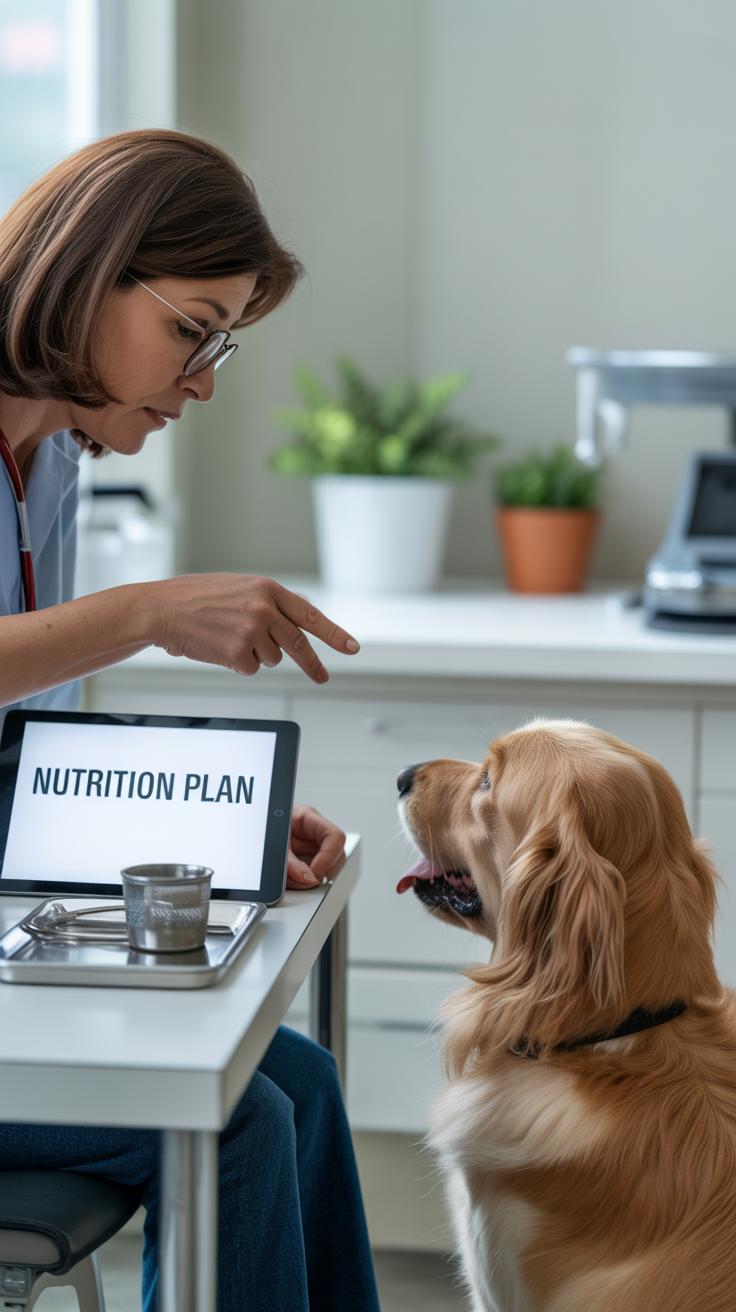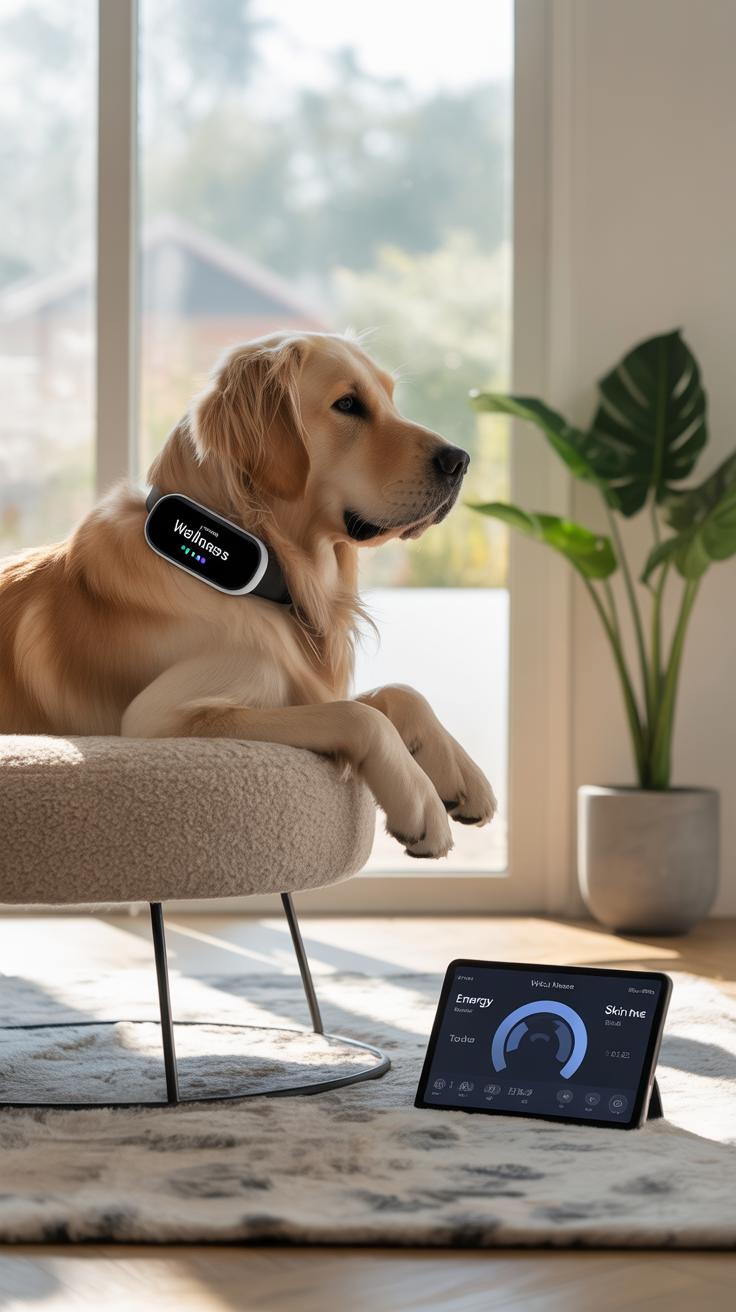Introduction
You may enjoy garlic green beans as a tasty and nutritious dish. When it comes to sharing food with your dog, you might wonder if garlic green beans are safe for them. Dogs can eat some vegetables, but not all human foods are good for them.
This article explores what you need to know before giving your dog garlic green beans. It explains which parts of this dish are okay and which are harmful. You’ll learn how to keep your dog healthy while sharing food and what signs to watch for if you decide to try it.
What Are Garlic Green Beans
Garlic green beans are a simple vegetable side dish featuring green beans cooked with garlic to bring out a rich, savory flavor. It’s a homey, straightforward recipe—nothing fancy, but very satisfying. Typically, fresh green beans are trimmed and sautéed or steamed briefly before being tossed with minced or sliced garlic. Sometimes a bit of oil or butter is added during cooking to carry the garlic’s aroma throughout the beans.
The dish focuses mainly on these two ingredients but can vary slightly with seasonings like salt, pepper, or a squeeze of lemon. Often, it’s on weeknight dinner tables due to the ease of preparation and the healthy profile. While it’s not a complicated recipe, the way garlic enhances the natural crispness and mild sweetness of green beans is kind of the point.
For you, if you’re thinking about sharing this dish or parts of it with your dog, knowing what goes in and how it’s cooked matters, which brings us to the ingredients.
Key Ingredients in Garlic Green Beans
The core ingredients are, naturally, green beans and garlic. Green beans are young, unripe pods from the common bean plant, known for their crunchy texture and subtle grassy flavor. They’re often chosen for their nutritional value and versatility.
Garlic stands out as the flavoring powerhouse here. It offers a strong, pungent taste and aroma, which changes from sharp raw to mellow and sweet when cooked. Garlic is usually used in small amounts to provide just enough to lift the beans’ flavor without overpowering them.
Aside from these two, you might see the addition of:
– Olive oil or butter to sauté the garlic and beans
– Salt and black pepper for seasoning
– Sometimes a touch of lemon juice or herbs like parsley for freshness
Each piece plays a distinct role—garlic for pungency, green beans for texture and mild earthiness, and fats or seasoning to balance and heighten those qualities.
How Garlic and Green Beans are Prepared Together
Commonly, garlic green beans are made by first blanching or steaming the beans until tender-crisp. This step keeps them bright green and avoids sogginess. Then, the garlic usually gets lightly sautéed in oil or butter until fragrant but not burnt. Burnt garlic tastes bitter, so timing matters here.
Once the garlic is ready, the beans go back into the pan to mingle, often with a quick toss to coat everything evenly. You get the sharp aroma of garlic softened by heat, wrapping the crisp beans in a subtle garlicky warmth. Some cooks sauté everything together without the blanching; it’s faster but can make beans a bit chewier.
The two ingredients naturally complement each other—the beans offer a fresh, crunchy canvas, while the garlic brings flavor that’s bright but not overwhelming when done right. The final dish leans on texture as much as taste, serving as a straightforward, flavorful side.
Are Green Beans Safe for Dogs
Green beans can be a safe and healthy snack for your dog, but it’s not as simple as just tossing them over. Many dogs enjoy the crunch, and it can even help with weight control since green beans are low-calorie. Yet, not every dog might take to them right away, and some might have mild stomach upset if introduced too quickly. It’s a good idea to start with small amounts and watch how your dog reacts.
One thing that concerns many pet owners is the potential choking hazard. Green beans are fibrous and firm, so they need to be prepared thoughtfully. Also, they’re best served plain — any seasoning, especially garlic or onion, can be harmful. Some dogs may tolerate raw beans, but most do better with them cooked until soft.
Nutritional Benefits of Green Beans for Dogs
Green beans bring quite a bit to the table. They contain vitamins C and K, which play roles in immune support and blood clotting. There’s also a good dose of fiber, which helps with digestion — especially for dogs who might be prone to irregular bowels. Plus, minerals like manganese help with bone health and metabolism.
You might be surprised to learn these veggies have almost no fat. That makes them a solid treat alternative if you’re aiming to manage your dog’s weight. Of course, green beans aren’t a substitute for a balanced diet, but adding them in moderation can offer some extra nutrients that dogs don’t get from kibble alone.
How to Serve Green Beans to Dogs Safely
Preparing green beans for your dog isn’t complicated but requires some care. Here’s what usually works well:
- Wash thoroughly to remove dirt or pesticides.
- Cut into small, manageable pieces to reduce choking risks.
- Steam or boil until soft; raw beans can be tough to digest and might irritate the stomach.
- Avoid any added salt, butter, oils, or seasonings.
- Introduce gradually, observing for any changes in digestion or behavior.
In my experience, dogs often prefer green beans when they’re slightly warm rather than cold from the fridge. Some might even enjoy them mashed or mixed with their regular food. The key is to keep it simple — the less you add, the safer and healthier it is.
Is Garlic Safe for Dogs
Garlic is a tricky ingredient when it comes to dogs. Unlike humans, dogs can’t handle garlic very well. The problem lies in certain compounds garlic contains that can cause harm. It’s not about eating a clove here or there; even small amounts might pose risks over time.
Garlic contains substances called thiosulfates. These are not easily broken down by a dog’s digestive system. When ingested, they can damage red blood cells, leading to a condition called hemolytic anemia. The red blood cells break down faster than the body can replace them, which affects oxygen transport.
If a dog eats garlic, you might notice some subtle or obvious signs. These include:
- Weakness or lethargy
- Breathing trouble or rapid breathing
- Pale gums or a yellowish tint to the eyes and skin
- Vomiting or diarrhea
- Loss of appetite
- Unusual drooling or panting
Sometimes symptoms don’t appear immediately and can show up days later. It can be confusing because these signs are similar to other illnesses. So, if your dog has had garlic, and you see any of these, it’s worth calling your vet.
While a one-time tiny taste might not always cause trouble, repeated exposure is more likely to cause harm. This makes garlic an ingredient to approach with real caution if you’re thinking about sharing your food with your dog.
Combining Garlic With Green Beans for Your Dog
Mixing garlic with green beans might seem harmless or even healthy when you’re sharing your meal with your dog. After all, green beans alone are often recommended as a low-calorie snack. But tossing in garlic changes the picture quite a bit, and not in a good way.
Even small amounts of garlic can pose risks for dogs. Garlic contains compounds that can cause damage to a dog’s red blood cells, sometimes leading to anemia. That risk doesn’t disappear just because it’s combined with something as innocent as green beans. It’s tricky because the garlic amount in homemade dishes varies, and dogs are more sensitive than humans. Sometimes, a tiny bit might not cause visible symptoms, but over time or in certain breeds, it might add up to a problem.
Consider this: you might think that diluting garlic with plenty of green beans lessens the harm. Maybe. But it’s hard to be sure how much is too much. Some dogs seem fine with very small doses, and others react badly to even less.
On the other hand, feeding your dog plain green beans sidesteps all that uncertainty. Green beans are rich in fiber and vitamins, with no toxic compounds. You can cook or steam them without any seasoning to avoid salts, spices, or oils that dogs shouldn’t have. It’s a simple, safe treat if you want to add some veggies to your dog’s diet.
So, when weighing risks versus benefits, the safest bet is usually to keep garlic out of the mix entirely. The benefits from the green beans alone are solid and clear, while the risks from garlic—even small amounts—are less predictable and potentially serious.
Safe Alternatives to Garlic Green Beans for Dogs
If you’re wary of the risks garlic can pose to dogs but still want to offer something crunchy and healthy like green beans, there are several vegetable options that your dog might enjoy. Think about peas, carrots, or even broccoli—each has its own set of benefits. For example, carrots are rich in beta-carotene and fiber, which can support eye health and digestion. Peas provide some protein and vitamins, and broccoli packs antioxidants and vitamin C.
Preparing these veggies for your dog isn’t complicated, but a few rules help. You should always wash them thoroughly and serve them plain—no seasoning, butters, or oils. Steaming is often a better choice than boiling; it helps keep nutrients intact while softening the texture so your dog won’t struggle to chew. Sometimes, raw veggies can be too tough or cause gas, so keep an eye on how your pet reacts.
Here are some tips to keep in mind when giving vegetables to dogs:
- Cut veggies into bite-sized pieces to avoid choking.
- Start with small amounts to see how your dog’s stomach handles new foods.
- Avoid any seasoning, salt, or oils that humans often use.
- Remove any parts that might be hard to digest, like broccoli stems or pea pods.
- Rotate different vegetables to keep things interesting and more balanced in nutrients.
Sharing veggies with your dog can be simple and safe, as long as you pick the right kinds and prepare them properly—without any garlic involved. Just remember, what works for one pup might not suit another perfectly. So, watch for any signs of upset or disinterest, and adjust accordingly.
How to Introduce Green Beans to Your Dogs Diet
When adding green beans to your dog’s meals, starting small is really the way to go. Begin with just a few pieces—maybe one or two green beans chopped up. This helps your dog’s digestive system get used to the new food without getting overwhelmed. It’s tempting to offer a big handful right away, but that can backfire.
Once you’ve given a small portion, keep an eye out for any signs of digestive discomfort over the next day or so. Some dogs might develop mild symptoms like diarrhea, excessive gas, or even vomiting. If you notice these, it doesn’t always mean you have to give up on green beans altogether. Sometimes dogs just need more gradual introduction or slightly smaller amounts.
On the other hand, if your dog seems fine—no sudden tummy issues or noticeable changes in behavior—you might slowly increase the amount in their meals. Pay attention to subtle things, like a slight decrease in appetite or sluggishness. These can be tricky to spot but could indicate their system isn’t quite ready. What works for one dog might not for another, so patience is key.
Consulting Your Veterinarian About Garlic Green Beans
Before offering your dog garlic green beans, it’s really best to check with your vet. Garlic is known to be risky for dogs in larger amounts, though some claim small quantities may be safe. It’s a confusing area, honestly, and vets can help clarify what’s okay based on your dog’s breed, size, and health history. I remember once thinking a tiny bit of garlic wouldn’t hurt my dog, but the vet’s advice made me pause. You don’t want to take chances if your dog might be sensitive.
When you talk to your vet, some good questions might be:
- Is it safe to feed my dog garlic or garlic-seasoned foods at all?
- How much green beans are appropriate, and should the preparation method change if garlic is added?
- Could garlic interact with any medications my dog is on?
- What signs of intolerance or toxicity should I watch out for?
- Are there better, safer alternatives for adding veggies or flavor to my dog’s diet?
Vets usually recommend treats and snacks that won’t upset digestion or cause long-term issues. Many suggest keeping vegetables simple—plain and cooked if needed—and avoiding potentially harmful ingredients like garlic, onion, or excessive salt. Treats should be a small part of the diet, and not replace balanced dog food. Sometimes, even harmless veggies can cause gas or tummy aches, so moderation is key.
In the end, your veterinarian’s guidance is the safest way through the maze of human foods. They can help you avoid unwanted surprises while finding healthy options your dog might actually enjoy. Because, honestly, dogs have quite different needs than we do.
Monitoring Your Dogs Health After Feeding New Foods
Introducing new foods like garlic green beans to your dog’s diet requires careful observation. Your dog’s body might react in ways you don’t expect. Sometimes, signs appear quickly. Other times, they develop slowly over a few days. Either way, watching your dog closely is the key.
Keep an eye on how they behave. Are they more lethargic than usual? Acting restless? Is their appetite changing? Physical cues are just as important—look for vomiting, diarrhea, or unusual drooling. Even a mild change in stool consistency can hint at digestive upset. And don’t forget the skin or coat; itchiness or hair loss might sneak in as a subtle warning.
If you notice persistent vomiting, difficulty breathing, swelling around the face or paws, or your dog seems extremely weak, these are signs you shouldn’t ignore. Immediate veterinary attention becomes necessary in such situations. Sometimes, what looks like a simple tummy upset can turn serious fast. When in doubt, it’s better to be safe and call a vet. Paying close attention after feeding new foods like garlic green beans might feel a bit like waiting for a reaction—but it’s worth it to catch any problems early.
Conclusions
Sharing food with your dog requires care, especially with dishes like garlic green beans. While green beans can be a healthy snack for dogs, garlic is known to be harmful to them in certain amounts. It can cause health issues that you want to avoid.
Before giving your dog garlic green beans, understand the risks and benefits, and always check with your veterinarian. It’s best to feed your dog plain green beans without any garlic or seasoning to keep them safe and healthy. Your dog’s health should always come first when sharing food.

